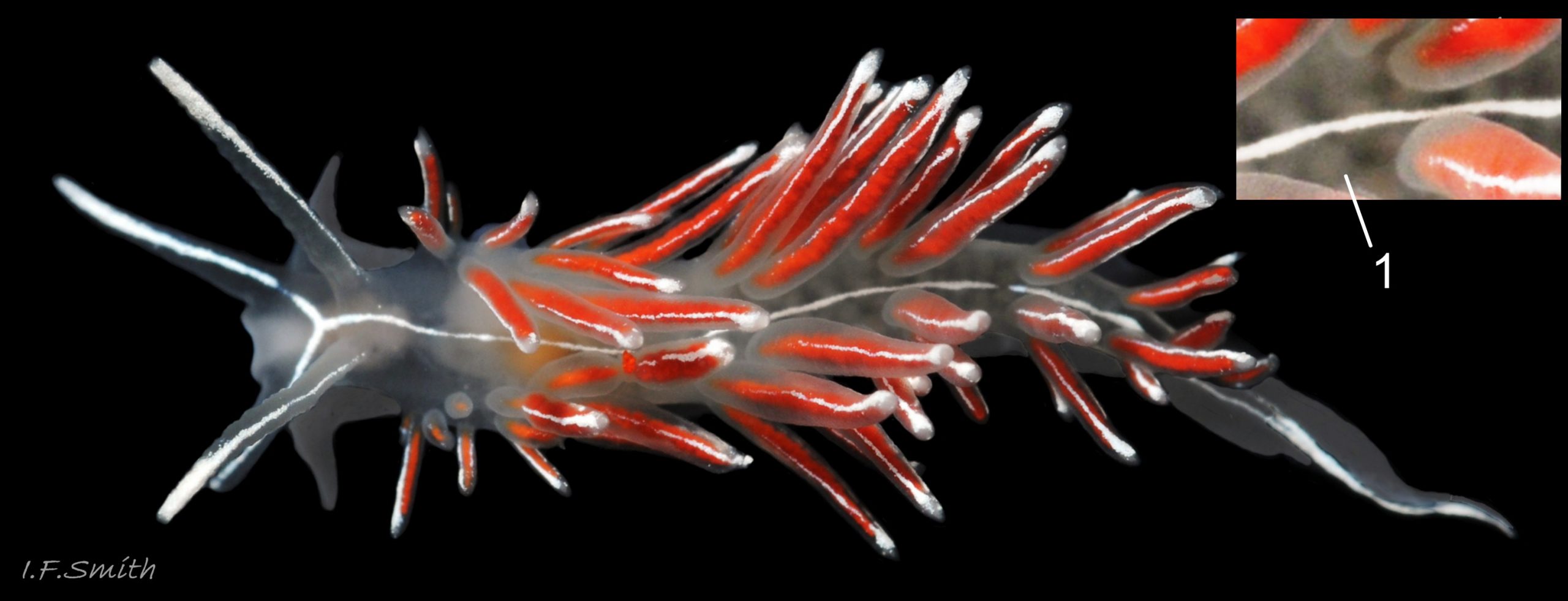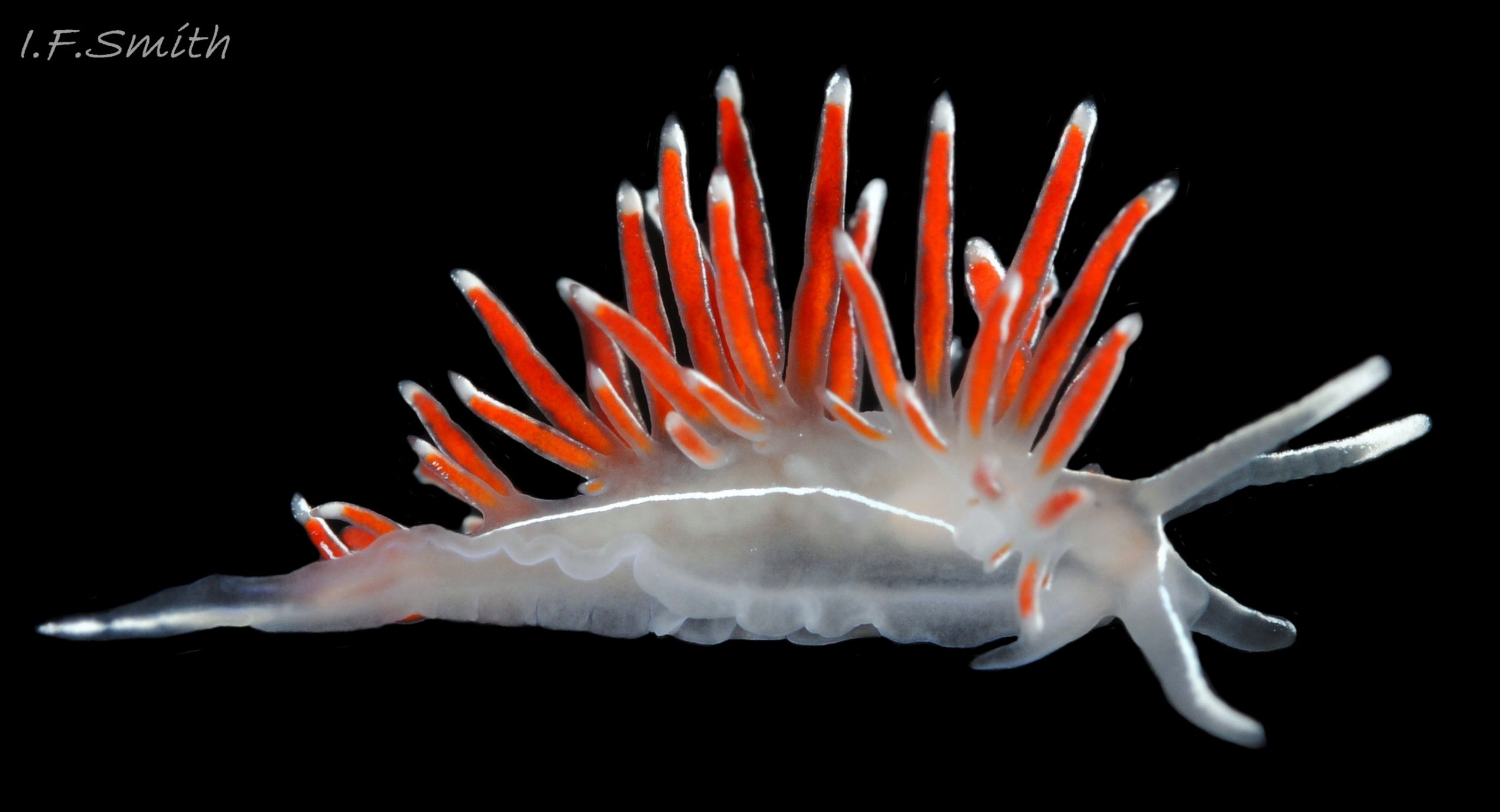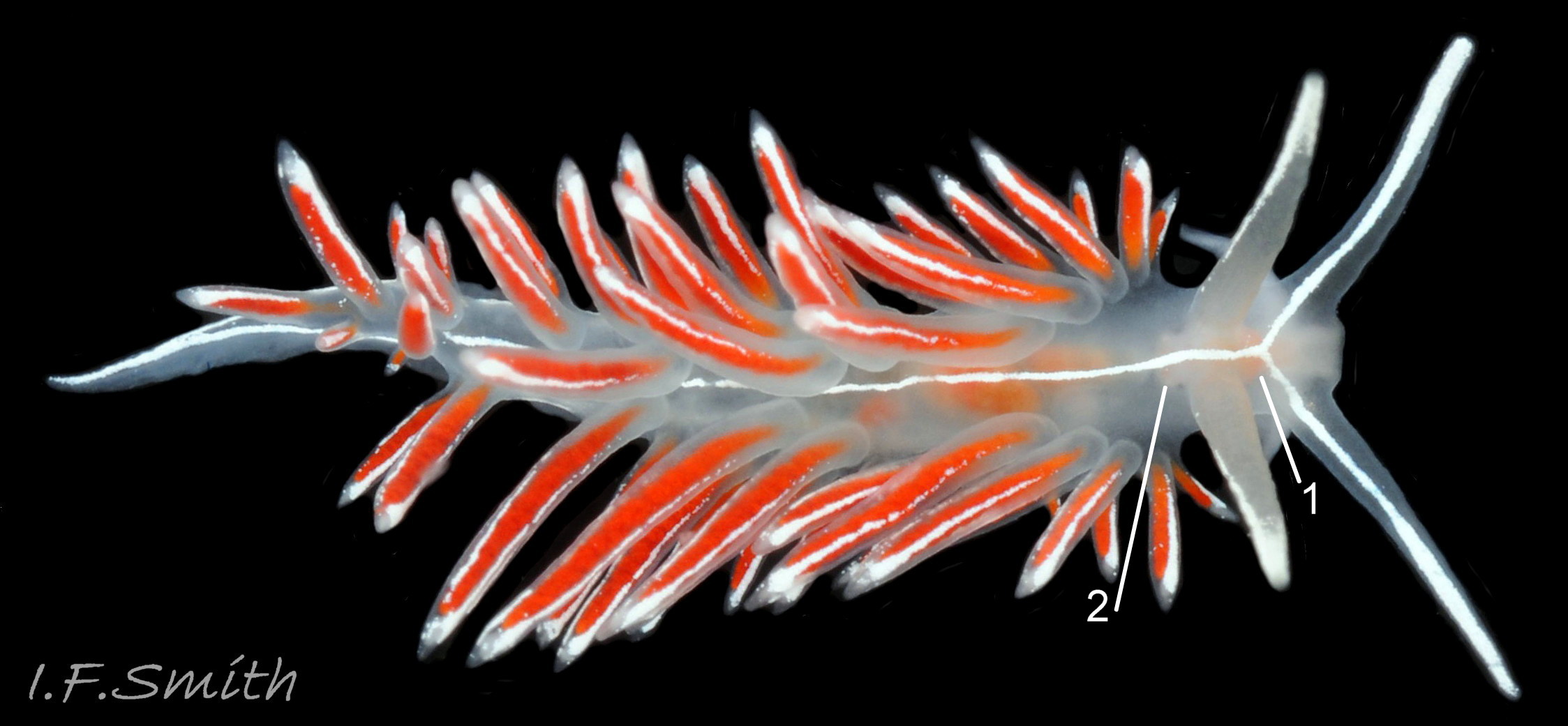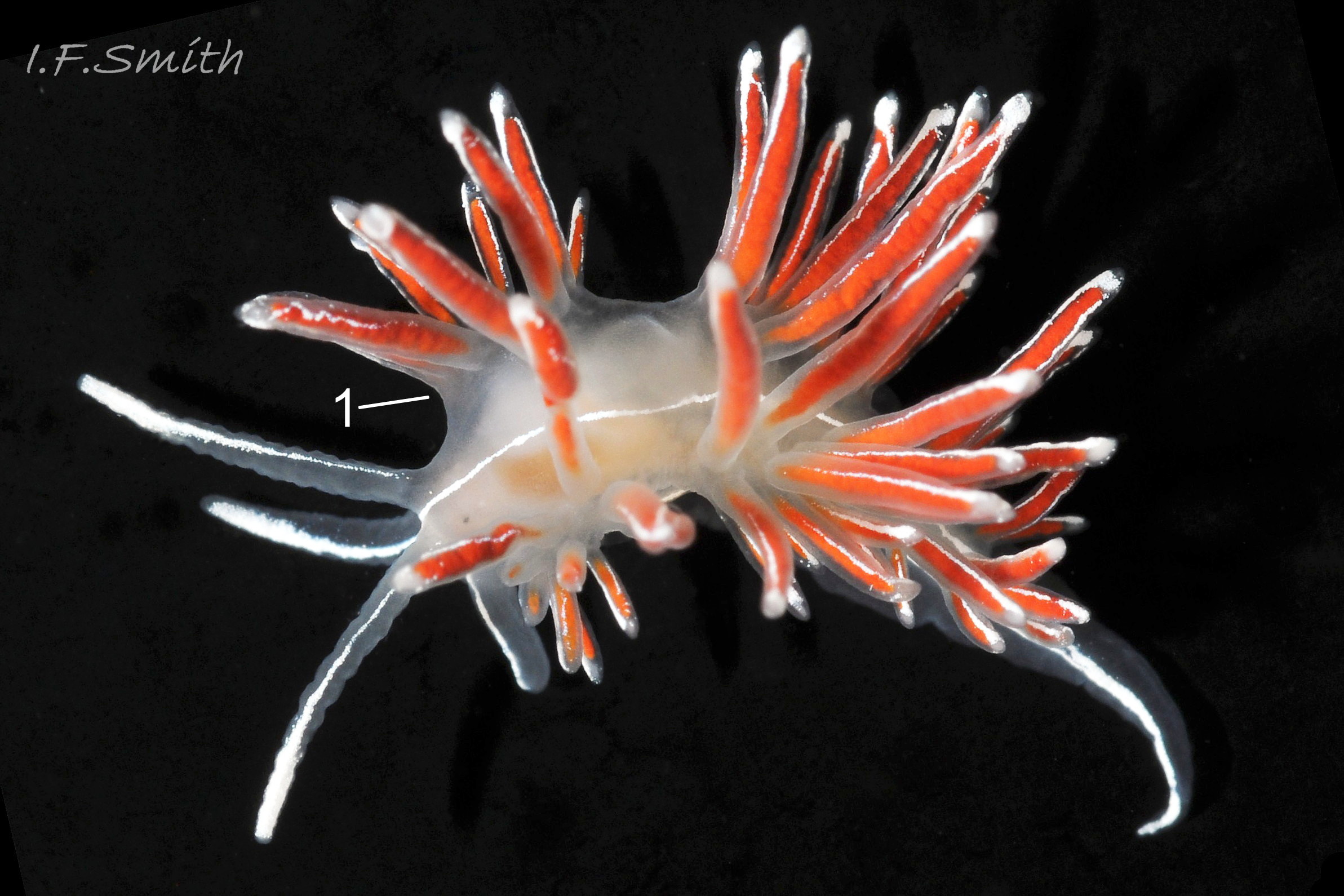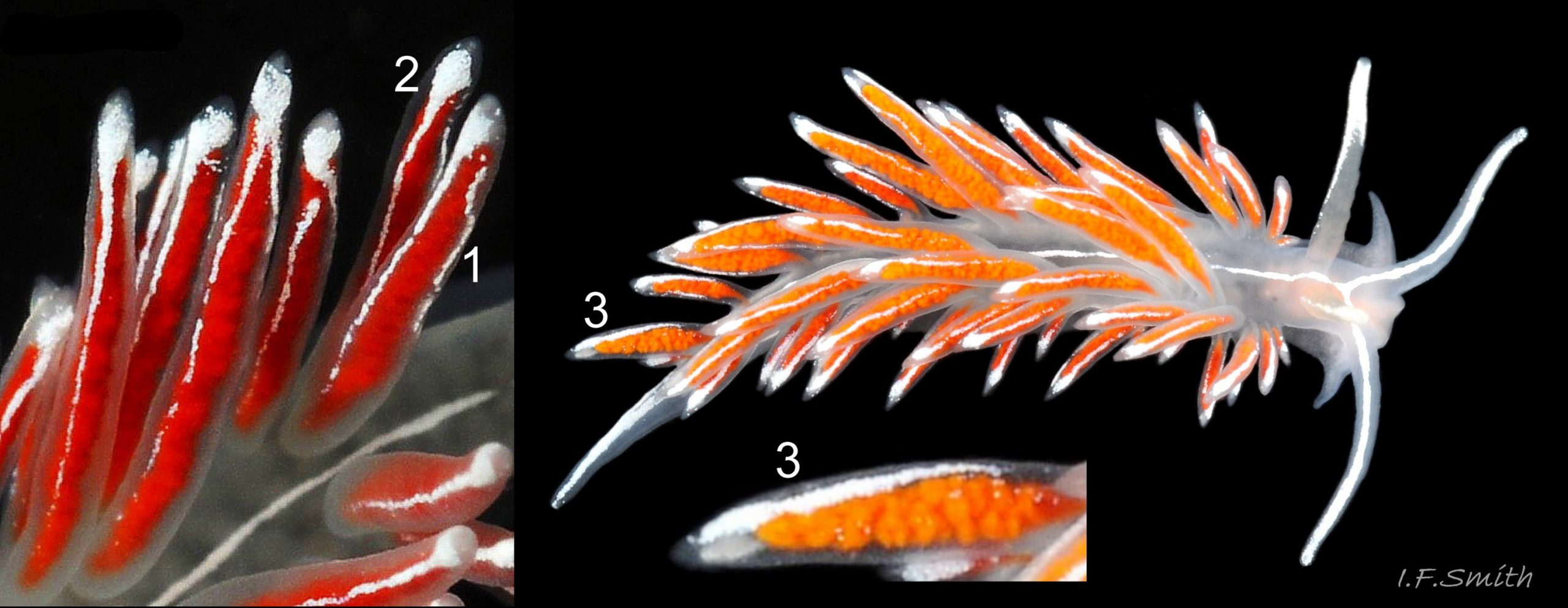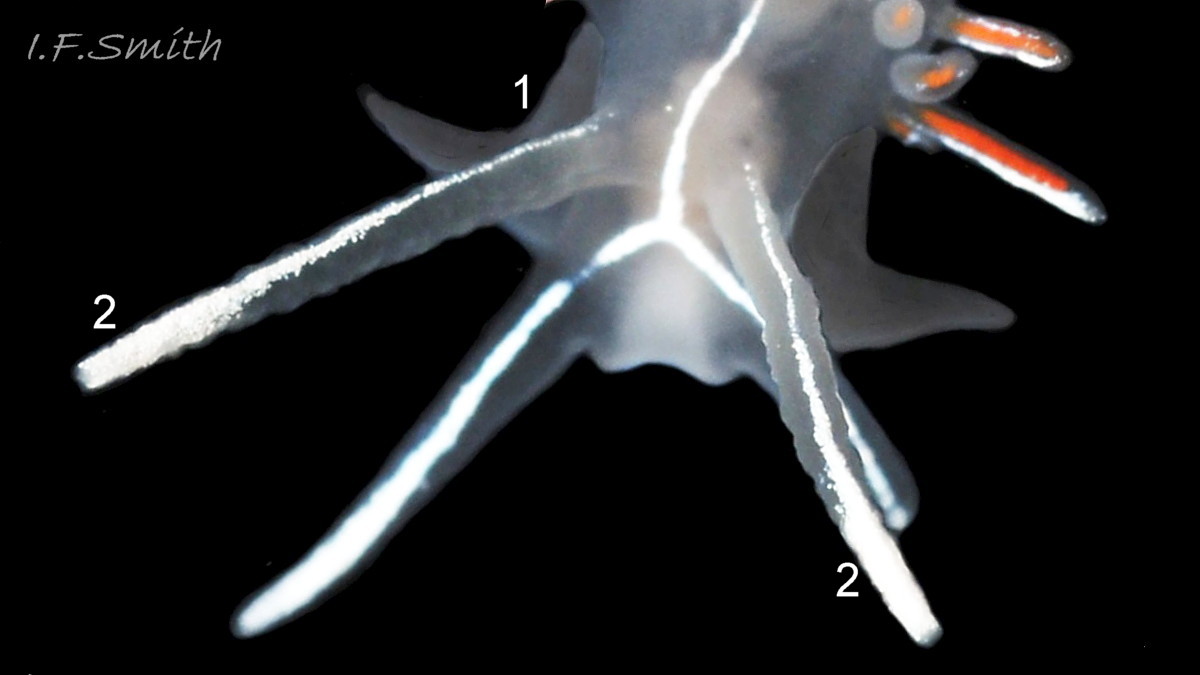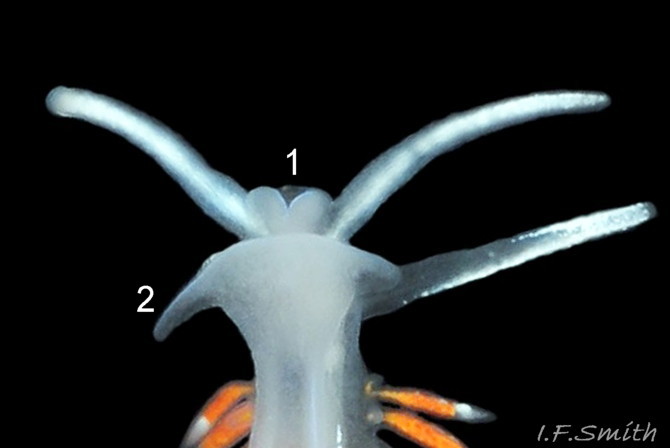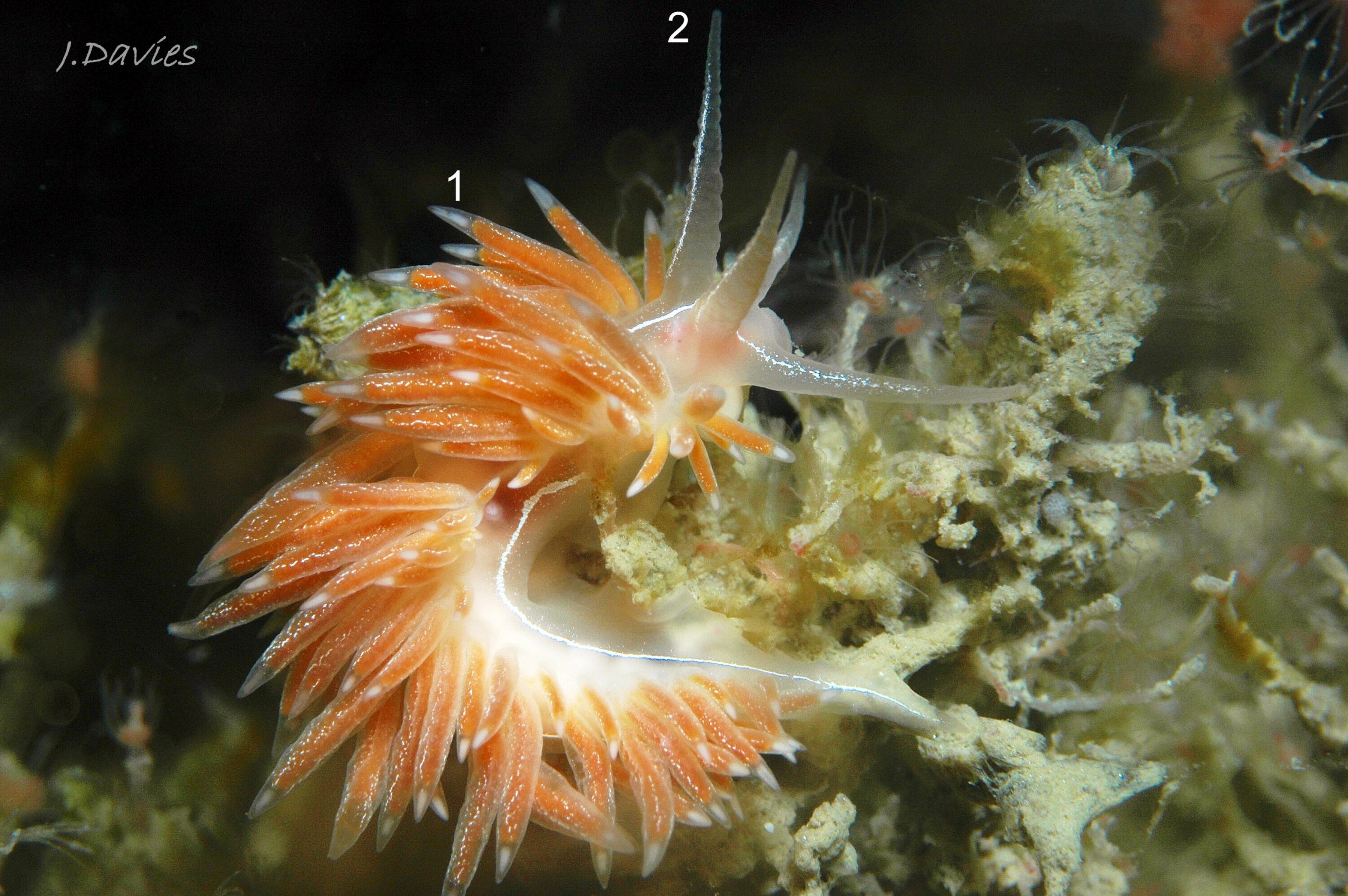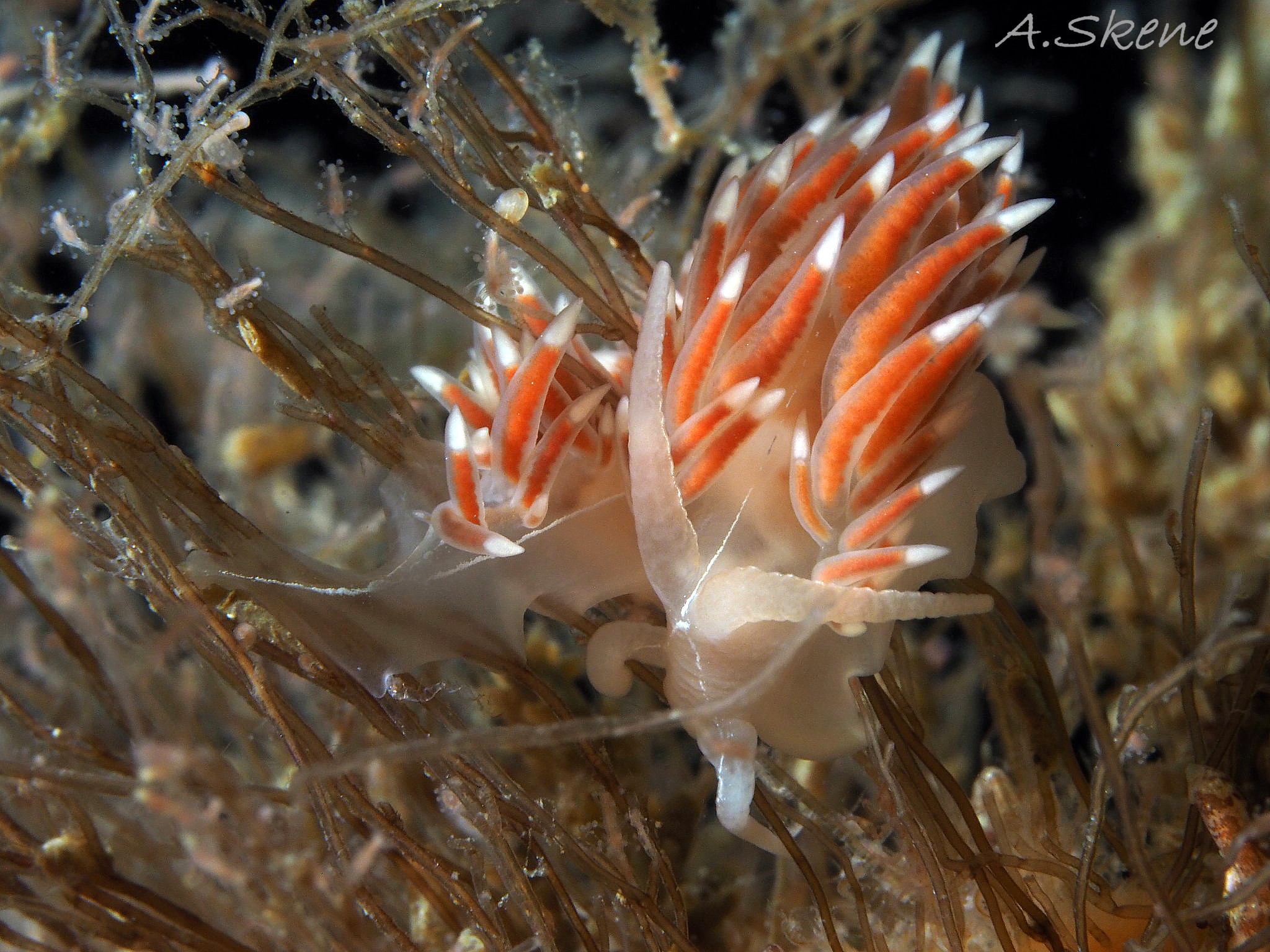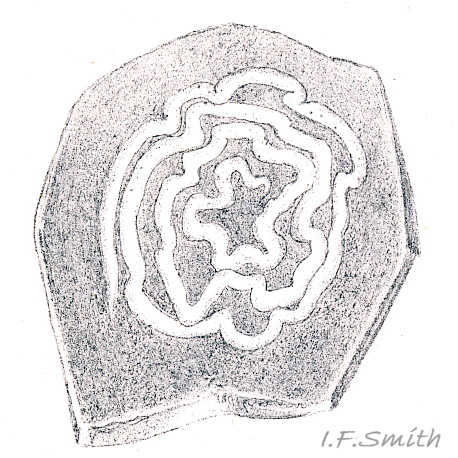Click image to enlarge with full caption. Main text below slider.
Coryphella lineata (Lovén,1846)
PDF available at www.researchgate.net/publication/361739057_Coryphella_lin…
Current taxonomy: World Register of Marine Species www.marinespecies.org/aphia.php?p=taxdetails&id=139982
Synonyms: Flabellina lineata (Lovén, 1846); Fjordia lineata (Lovén, 1846).
Coryphella lineata was split into several species (Korshunova et al 2017), two of which live in British waters; Coryphella lineata sensu stricto and Coryphella chriskaugei. The specimens shown in this account are Coryphella lineata sensu stricto.
GLOSSARY BELOW
Description
C. lineata usually grows up to 30 mm long, occasionally 50 mm. The body is translucent white with a near-continuous, opaque, white dorsal line from the posterior group of cerata to in front of the rhinophores where it bifurcates along the oral tentacles 01 Coryphella lineata . An opaque white, lateral line runs along each side from, on the right side, the genital aperture below the anterior group of cerata to the tail, where they unite to make a doubly thick line 02 Coryphella lineata & 04 Coryphella lineata . Internal organs, such as the pink buccal mass, circum-oesophageal nerve ring and small, unobtrusive, black eyes, are sometimes visible in the translucent body 03 Coryphella lineata and white ovotestis lobules may be visible in mature specimens 01 Coryphella lineata . The hermaphrodite genital opening is on the right below the first group of cerata 02 Coryphella lineata . The posterior half of juveniles, under circa 9 mm, lacks ovotestes and is almost transparent so the substrate is visible dorsally through the body and the cerata visible through the sole when viewed ventrally 04 Coryphella lineata .
The cerata are arranged in five to eight groups on each side of the body. Each group arises from a discontinuous, transparent, colourless, notal ridge 05 Coryphella lineata . The cerata are translucent white revealing the bright red, orange, reddish brown, dark brown or, rarely, green internal digestive gland and, in the tip, the translucent, white cnidosac. The gland sometimes has a granular appearance. An anterior, and often a posterior, opaque white line on the surface run the length of each ceras 06 Coryphella lineata ; one or both expand to form an opaque white cap which conceals much or most of the interior, translucent, white cnidosac.
The slightly wrinkled rhinophores 07 Coryphella lineata are translucent white with a longitudinal, opaque white line which is narrow at the base and expands to often almost completely cap the distal quarter of the rhinophore.
The head has long, translucent white, oral tentacles with an opaque white line from apex to head where it unites with the dorsal body line. The large outer lips of the mouthparts are ventrally cleft 08 Coryphella lineata .
The slender, translucent white foot 04 Coryphella lineata is widest at the anterior and tapers to a fine posterior point. The anterior extends into curved wedge-shaped propodial tentacles as long as c. half the foot width, to form a crescent in ventral view 08 Coryphella lineata .
Key identification features
Coryphella lineata 06 Coryphella lineata
1) Body has opaque white line dorsally and along each side, uniting on tail.
2) Each ceras has one or two opaque white lines from base to tip, where they broaden into an opaque white cap concealing most of the internal translucent white cnidosac.
Similar species
Coryphella chriskaugei (Korshunova, Martynov, Bakken, Evertsen, Fletcher, Mudianta, Saito, Lundin, Schrödl & Picton, 2017)
1) Body has opaque white line dorsally and along each side, uniting on tail.
2) On cerata, internal translucent white cnidosac is never concealed by an opaque white cap. The rest of each ceras may have two opaque white lines 09 Coryphella lineata, often fragmented, and/or scattered opaque white marks 10 Coryphella lineata, or no white pigment at all 11 Coryphella lineata
Coryphella browni Picton, 1980; Coryphella verrucosa rufibranchialis (G. Johnston, 1832); Coryphella gracilis (Alder & Hancock, 1844) and Carronella pellucida .
1) Some have an incomplete, opaque white, dorsal line, but none has lateral body lines.
2) All have some subapical, opaque white pigment on the cerata; on C. pellucida it forms a complete cap.
Habits and ecology
C. lineata is occasionally found at ELWS on rocky shores exposed to strong currents. It can be abundant sublittorally between 20 and 40 m, sometimes reaching to 360 m (Thompson & Brown, 1984). It is usually found on or near its prey, primarily Tubularia, but occasionally other hydroids, especially when juvenile.
Like other nudibranchs, it is a simultaneous hermaphrodite. Spawn is deposited as a white or pink spiral line 12 Coryphella lineata . Two or more generations are born from April to August as veliger larvae to drift in the water column before settling and metamorphosing.
Distribution and status
It is recorded from northern Norway to the western Mediterranean, but not the inner Baltic, GBIF map www.gbif.org/species/2292289 . It is found a occasionally at ELWS and frequently sublittorally all around Britain and Ireland where Tubularia occurs, UK map, NBN, species.nbnatlas.org/species/NHMSYS0021056168 .
Acknowledgements
For use of images I gratefully thank Jan Davies, Paula Lightfoot and Alastair Skene.
References and links
Alder, J. & Hancock, A. 1845-1855. A monograph of the British nudibranchiate mollusca. London, Ray Society. Fam. 3 Pl. 16 . www.biodiversitylibrary.org/item/131598#page/346/mode/1up
Korshunova T, Martynov A, Bakken T, Evertsen J, Fletcher K, Mudianta WI, Saito H, Lundin K, Schrödl M, Picton B (2017) Polyphyly of the traditional family Flabellinidae affects a major group of Nudibranchia: aeolidacean taxonomic reassessment with descriptions of several new families, genera, and species (Mollusca, Gastropoda). ZooKeys 717: 1-139. doi.org/10.3897/zookeys.717.21885
Thompson, T.E. & Brown, G.H. 1984. Biology of opisthobranch molluscs 2. London, Ray Society.
GLOSSARY
buccal mass = anterior of digestive system including an odontophore which supports the anterior of the radula, and a complex of muscles to operate them and other mouthparts.
cerata = (sing. ceras) lobes on dorsum of aeolids and some other seaslugs.
circum-oesophageal nerve ring = ganglia-bearing nerve cord (the ‘brain’) which encircles the oesophagus in gastropods.
cnidocytes = explosive stinging cells of Cnidaria. en.wikipedia.org/wiki/Cnidocyte
cnidosac = storage capsule at tips of cerata of Aeolidiidae for ingested unexploded cnidocytes.
digestive gland = large organ in gastropods which acts like the liver and pancreas in mammals to absorb food.
distal = away from centre of body or from point of attachment.
ganglia = (sing. ganglion) knots containing sensory cell bodies on a nerve cord, which conducts impulses to innervate organs of the body.
LWS = low water spring tide; two periods of a few days each month when tide falls lowest.
notal = (adj.) of the back.
notal ridge = ridge on dorsal surface.
notum = (of seaslugs) the dorsal surface.
ovotestis = (pl. ovotestes) hermaphrodite organ serving as both ovary and testis.
propodial tentacles = tentacular, lateral extensions on anterior of the foot.
propodium = anterior portion of gastropod foot. (adj. propodial).
rhinophores = chemo-receptor tentacles on top of head of nudibranch.
veliger = shelled larva of marine gastropod or bivalve mollusc which moves by action of cilia on a velum (bilobed flap). Stage may be passed in plankton or within liquid-filled egg-capsule.
